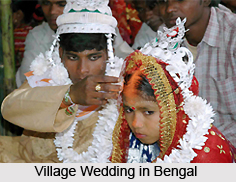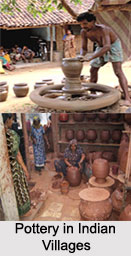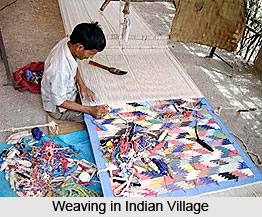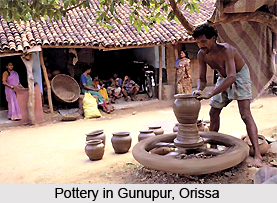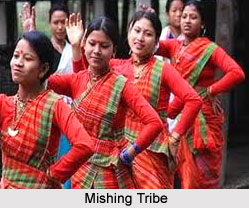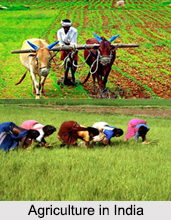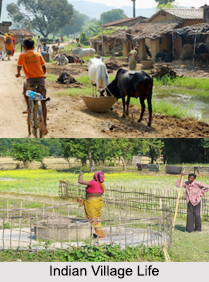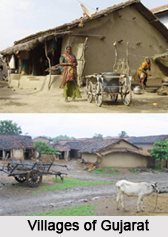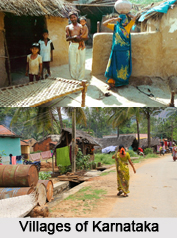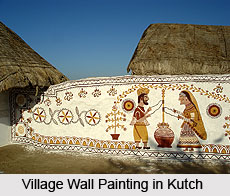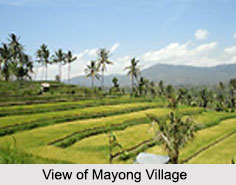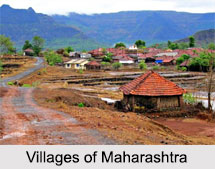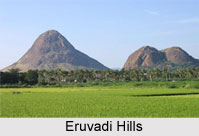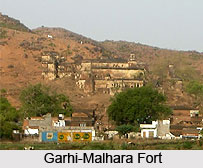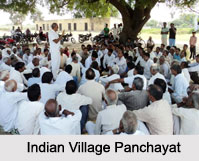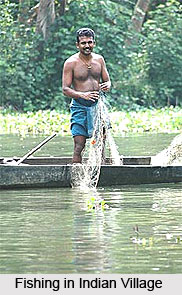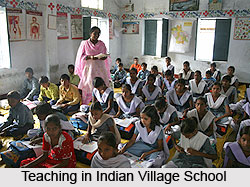Introduction
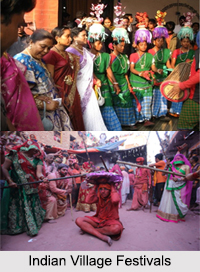 Indian villages celebrate some of the unique festivals that reflect the rural charm and simplicity of the Indian people. The villages of the Indian states are special for their distinguished fairs and festivals, however, festivals like Republic Day, Diwali, Gandhi Jayanti , Eid-ul- Fitr, Independence Day and Janmashtami are celebrated nationwide. Besides the religious festivals, cultural ones are also predominant in the Indian villages.
Indian villages celebrate some of the unique festivals that reflect the rural charm and simplicity of the Indian people. The villages of the Indian states are special for their distinguished fairs and festivals, however, festivals like Republic Day, Diwali, Gandhi Jayanti , Eid-ul- Fitr, Independence Day and Janmashtami are celebrated nationwide. Besides the religious festivals, cultural ones are also predominant in the Indian villages.
North Indian Village Festivals
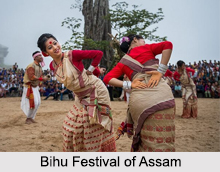 The composite culture and the festivals of the villages in North Indian states are closely associated with the Himalayas and sacred rivers, passing across the states of Delhi, Jammu and Kashmir, Himachal Pradesh, Punjab, Haryana, Rajasthan, Uttarakhand and Uttar Pradesh. Most of the festivals celebrated in these villages are common and similar in their themes. Karva Chauth, Vasant Panchami, Diwali, Lohri, Buddha Purnima, Kheer Bhawani are the commonly celebrated all across northern Indian villages.
The composite culture and the festivals of the villages in North Indian states are closely associated with the Himalayas and sacred rivers, passing across the states of Delhi, Jammu and Kashmir, Himachal Pradesh, Punjab, Haryana, Rajasthan, Uttarakhand and Uttar Pradesh. Most of the festivals celebrated in these villages are common and similar in their themes. Karva Chauth, Vasant Panchami, Diwali, Lohri, Buddha Purnima, Kheer Bhawani are the commonly celebrated all across northern Indian villages.
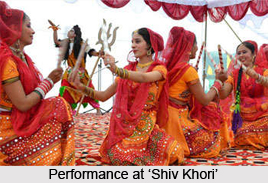 North Indian village festivals are the several kinds of festivals which are celebrated in different regions of India throughout the year. Among the five regions of India, the northern portion is quite famous for celebrating a variety of colourful festivals. The villages in the states of Jammu and Kashmir, Punjab, Himachal Pradesh, Haryana, Uttar Pradesh and Uttarakhand comprise the north Indian villages. Processions, prayers, new attires, dance, music, etc. are the common elements in any kind of celebration in north India. However, though the basic mood is the same, the traditions and cultures of celebrating festivals differ from state to state. The north Indian village festivals can be classified according to their nature or style of celebration. While some of the festivals are of religious nature, there are a few that are related to change of season and harvesting.
North Indian village festivals are the several kinds of festivals which are celebrated in different regions of India throughout the year. Among the five regions of India, the northern portion is quite famous for celebrating a variety of colourful festivals. The villages in the states of Jammu and Kashmir, Punjab, Himachal Pradesh, Haryana, Uttar Pradesh and Uttarakhand comprise the north Indian villages. Processions, prayers, new attires, dance, music, etc. are the common elements in any kind of celebration in north India. However, though the basic mood is the same, the traditions and cultures of celebrating festivals differ from state to state. The north Indian village festivals can be classified according to their nature or style of celebration. While some of the festivals are of religious nature, there are a few that are related to change of season and harvesting.
Village Festivals of Jammu and Kashmir
`Shiv Khori Festival`, `Jhiri Fair` or `Jhiri Festival`, `Khir Bhawani Festival` are some of the popular village festivals of Jammu & Kashmir. Jhiri Festival is celebrated at Jhiri Village which is about 20 kms away from Jammu during late October or November in the honour of Baba Jitto, a farmer who sacrificed his life instead of accepting the demands of the Zamindar. Observed in the Shiv Khori shrine based in Ransoo village, about 130 kms from Jammu, the Shiv Khori festival is celebrated during Mahashivaratri. Another significant festival here is the Khir Bhawani festival arranged at Khir Bhawani Temple, Tulla Mulla village which is dedicated to deity Ragnya Devi continues for 10 days. The local `pundits` of Kashmir approach this temple during Navratra (Navaratri) and a `Maha Yajna` is held in this festival.
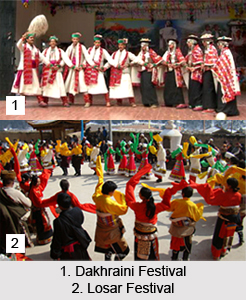 On the other hand `Urs` is a Muslim festival, mostly celebrated in the villages of Jammu and Kashmir. This is a typical Kashmiri festival held annually at the shrines of Muslim saints on their death anniversaries. Another important festival in the villages of Jammu and Kashmir is `Sindhu Darshan`. The people worship the source of the Sindhu River in Leh during this festival. There are a few Buddhist festivals celebrated in the villages of north India like the `Yuru Kabgyat`. `Doscmoche` is another ancient festival that is still celebrated in the villages of Jammu and Kashmir every year with great pomp and fervour.
On the other hand `Urs` is a Muslim festival, mostly celebrated in the villages of Jammu and Kashmir. This is a typical Kashmiri festival held annually at the shrines of Muslim saints on their death anniversaries. Another important festival in the villages of Jammu and Kashmir is `Sindhu Darshan`. The people worship the source of the Sindhu River in Leh during this festival. There are a few Buddhist festivals celebrated in the villages of north India like the `Yuru Kabgyat`. `Doscmoche` is another ancient festival that is still celebrated in the villages of Jammu and Kashmir every year with great pomp and fervour.
Village Festivals of Himachal Pradesh
`Dakhraini Festival` is observed in July and a grand feast is arranged by the villagers, after dancing in front of the village deity. Zongor and Loskar flowers are made into garlands and offered respectfully before the Goddess. A white flag marked with Buddhist `mantras` is flown which represents a prayer for the peace of the dead. Celebrated in Kinnaur during September is `Flaich Ukhayang` in which a fair is observed and floral garlands are offered to the deity, after it is carried in a procession. The Rajput people of the village sing and dance during the festival. They also worship the village deity on the third day of the festival, by bedecking him/her with all the finery along with the numerous flowers. `Losar` is another village festival held in December to greet the new year wherein garlands of Chilgoza are clad by the family members. These garlands are also offered to the neighbours and `losuma tashi` greetings are exchanged, which signify the greetings of a prosperous new year. The birth of male children is honoured in the form of `Gochi Festival` observed in Bhaga Valley and children throw snow balls aimed at one another.
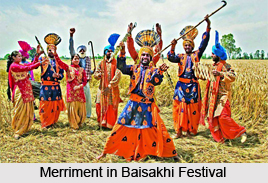 Another two major north Indian village festivals are `Teej` and `Sanjhi`. Both these festivals are celebrated in the villages of Himachal Pradesh. While Teej is a colourful festival where the girls and married women worship Lord Shiva and Parvati, Sanjhi is a festival where the unmarried girls worship Sanjhi as the Mother Goddess. They make the image of Sanjhi with mud using various shapes and worship the image.
Another two major north Indian village festivals are `Teej` and `Sanjhi`. Both these festivals are celebrated in the villages of Himachal Pradesh. While Teej is a colourful festival where the girls and married women worship Lord Shiva and Parvati, Sanjhi is a festival where the unmarried girls worship Sanjhi as the Mother Goddess. They make the image of Sanjhi with mud using various shapes and worship the image.
Village Festivals of Punjab
`Baisakhi Fair` or `Baisakhi Mela` is amongst the most renowned festivals of the rural parts of Punjab and it celebrates the prosperity associated with harvest. Villagers are dressed in their most fashionable attires and participate in various activities like acrobatics, races, wrestling bouts, singing and much more in the Baisakhi festival. Local handicrafts, bangles, toys and items of domestic utility are all exhibited and sold in Baisakhi Mela. The villagers perform various forms of folk dance and music during the festival. `Gurupurab` is another major Sikh and Punjabi festival in north Indian villages. Rural people celebrate the birthdays and the martyrdom of reverend Sikh Gurus. This festival is celebrated by performing mock battles, display of swordsmanship and horse riding. `Vaitha-Vatur-Truvah` is one of the major north Indian village festivals. This festival is celebrated in the villages of Punjab. People from all religious communities participate in the festival.
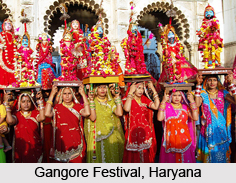 Village Festivals of Haryana
Village Festivals of Haryana
`Gangore` is also one of the popular north Indian village festivals during which, idols of `Ishar` and Gangore are worshipped in Haryana. This spring festival is held in honour of Gauri, the Goddess of Abundance and is observed during the period between March and April. Attractive idols of Gauri are beautifully decked up and carried in a long procession along with the town band, and it progresses from village to village. Another important festival celebrated here is the `Mansa Devi Mela` which is held in Bilaspur village close to Mani Majra. They are observed twice in a year, first during March to April and the second one during September till October.
Village Festivals of Uttar Pradesh
`Lathmar Holi` is a famous festival celebrated in the villages of Braj in Uttar Pradesh. This is one of the most notable north Indian village festivals and it has an ancient tradition. According to Hindu mythology, Lord Krishna from Nandgaon used to come to Barsana to play Holi with Radha along with his `Gopi` friends during this period. Buddhist, Christian, Muslim and Hindu festivals are all observed here including `Kartik Purnima`, `Baisakhi Purnima`, `Nag Panchami`, `Sheetla Ashtami`, `Krishna Janmastami`, `Makar Sankranti`, `Raksha Bandhan`, `Deepavali`, `Shivaratri`, `Ganesh Chaturthi`, `Ganga Dussehra`, `Vasant Panchami`, `Holi`, `Shab-e-Barat`, `Eid-ul-Adha`, `Barawafat`, `Eid Ul Fitr`, `Muharram`, Christmas, Easter and Sikh festivals comprising Baisakhi, Martyr`s Day of Guru Tegh Bahadur, Jain festival of `Mahavir Jayanti`, etc. The `Ardh Kumbh Mela` and `Kumbh Mela` are two of the most notable festivals of Uttar Pradesh.
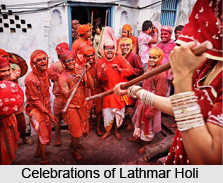 Village Festivals of Uttarakhand
Village Festivals of Uttarakhand
`Mata Murti Ka Mela` is another popular north Indian village festival held in the villages of Champavat region in Uttarakhand. This is a unique festival when the mother of Badrinath is worshipped. The `Magh Mela` during Sankranti in the Kumaon region is also an important festival.
The major Muslim festivals like Eid-ul-Fitr, Eid-ul-Adha, Muharram, etc. are celebrated in all the villages of north India and hence, are counted among the major north Indian village festivals. Christmas is the principal religious festival of the Christians and is celebrated in the villages of north India. The major festivals of other religions like Buddha Purnima of Buddhists, Mahavir Jayanti of Jains, etc. are also celebrated in the north Indian villages. Apart from all the above mentioned fairs and festivals, there are a few other north Indian village festivals that include Nagaur Fair, Desert Festival, Baneshwar Fair, Mewar Festival, Elephant Festival, Summer Festival, Pushkar Fair, Camel Festival, Lohri Festival, etc.
The north Indian village festivals are some of the most colourful and blissful festivals among all the villages in India. The people celebrate the festivals with lots of enthusiasm and cheerfulness.
East Indian Village Festivals
East Indian states of West Bengal, Bihar, Jharkhand and Odisha comprise the villages in this region. Cuisine plays a vital role in the eastern Indian village festivals. An important feature of the festivals in the villages of eastern Indian states is that these are diverse. While the most popular festivals celebrated in the villages of West Bengal are the Durga Puja and Kali Puja, Ratha Yatra is celebrated with lot of fervour in Odisha. The typical rural festivals of eastern India are Jatra Festival, Jhoolan, Poush Mela and Vasanta Utsav. Cultural festivals are also an important part of the East Indian village festivals.
 The villages in east India are rich in tradition and their cultural heritage. They are famous for celebrating a variety of vibrant festivals throughout the year. The East Indian village festivals are celebrated with much pomp and cheerfulness and are considered some of the greatest events to enjoy. The villagers take these festivals as a platform for social communication and also as a way to get relief from the stress of their daily life. The villages in the states of West Bengal, Bihar, Orissa and Assam can be clubbed into the term `East Indian villages`.
The villages in east India are rich in tradition and their cultural heritage. They are famous for celebrating a variety of vibrant festivals throughout the year. The East Indian village festivals are celebrated with much pomp and cheerfulness and are considered some of the greatest events to enjoy. The villagers take these festivals as a platform for social communication and also as a way to get relief from the stress of their daily life. The villages in the states of West Bengal, Bihar, Orissa and Assam can be clubbed into the term `East Indian villages`.
There are many festivals celebrated in the villages of West Bengal round the year. People from all strata of the village society celebrate these festivals. The major East Indian village festivals include Durga Puja, Kali Puja, Jagaddhatri Puja, Holi, Poila Boishakh (Bengali New Year), Ratha Yatra, Raksha Bandhan, Kojagari Lakshmi Puja, Saraswati Puja, Christmas, Eid-ul-Fitr, Eid-ul-Adha, etc. Apart from these, there are also a few other festivals celebrated by all villagers round the year. These festivals include Janmashtami, Bhai Phonta, Poush Parban, Shivaratri, Dolyatra, Akshay Tritiya, Buddha Purnima, Jamai Shasthi, Snanjatra, Jhulanyatra, Vishwakarma Puja, Annakut Utsav, Kartik Puja, Basanti Puja, Charak Puja, etc.
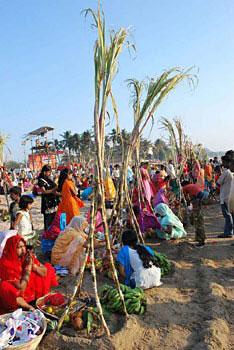 The festivals of Bihar are counted amongst the most notable East Indian village festivals. People in the villages of Bihar celebrate various festivals that can be classified as religious or seasonal and some of them are related to harvesting. Chhath Puja is one of the major religious festivals celebrated in the East Indian villages. The villagers worship the setting sun during Chhath Puja. It is celebrated twice in a year, once in the Bengali month of Chaitra and the other is in Kartik. Sama-Chakeva is another important village festival in east India. The celebration of this festival is done in the winter season with the arrival of colourful birds from Himalayas that migrate towards the plains. Apart from these, the other major festivals celebrated in the villages of east India include Ramnavami, Makar-Sankranti (also known as Tila Sankranti), Bihula, Madhushravani, Basant Panchami, etc.
The festivals of Bihar are counted amongst the most notable East Indian village festivals. People in the villages of Bihar celebrate various festivals that can be classified as religious or seasonal and some of them are related to harvesting. Chhath Puja is one of the major religious festivals celebrated in the East Indian villages. The villagers worship the setting sun during Chhath Puja. It is celebrated twice in a year, once in the Bengali month of Chaitra and the other is in Kartik. Sama-Chakeva is another important village festival in east India. The celebration of this festival is done in the winter season with the arrival of colourful birds from Himalayas that migrate towards the plains. Apart from these, the other major festivals celebrated in the villages of east India include Ramnavami, Makar-Sankranti (also known as Tila Sankranti), Bihula, Madhushravani, Basant Panchami, etc.
The East Indian villages present a perfect blend of composite culture including the tribal cultures. Many tribal communities live in the villages of east India and they celebrate different types of festivals throughout the year. Bihu is one of the principal East Indian village festivals and is mainly celebrated in the villages of Assam. There are three forms of Bihu festival namely the Bohag Bihu or Rongali Bihu, the Magh Bihu or Bhogali Bihu and the Kati Bihu or Kongali Bihu. Various tribal communities celebrate the Bihu festival in different names like Baisagu, Baikhu, Ali- Ai -Ligang, Bohhaggio Bishu, etc. The Nara-siga Bihu, Pushy Par or Tushu Puja, etc. are some of the contemporaries of Magh Bihu. Apart from these, there are also a few other community festivals celebrated in the East Indian villages that include Rongker, Rajini Gabra, Harni Gabra, etc.
Ratha Yatra is a major East Indian village festival mostly celebrated in the villages of Orissa and West Bengal. The festival is celebrated in order to commemorate the journey of Lord Jagannath, Lord Balaram and their sister, Shuvodra to their maternal home. Apart from Ratha Yatra, there are also a few tribal festivals celebrated in the villages of Orissa including the Chaita Parva and Bali Yatra.
The East Indian village festivals are famous all over the country for their bright colours and lights. People from all over the country visit the East Indian village during the festivals to experience the villagers` wonderful style of celebration.
North-East Indian Village Festivals
The north-eastern states of India are Nagaland, Meghalaya, Mizoram, Arunachal Pradesh, Assam, Tripura, Sikkim and Manipur. The culture of these north-eastern villages vastly depends on the migrated tribal culture. The villages of Mizoram, Meghalaya and Nagaland celebrate some tribal festivals like Chapchar Kut, Mim Kut, Ningol Chakouba, Heikru Hitongba among many others.
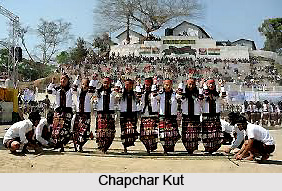 The `Seven Sister` states of Arunachal Pradesh, Assam, Manipur, Mizoram, Nagaland, Meghalaya and Tripura constitute the northeastern part of India. People living in the villages of these states celebrate a variety of colourful festivals throughout the year. As most of the villages are predominantly populated by the tribal communities, the northeastern India is the best place to experience the rich tribal culture. The northeast Indian village festivals are famous all over the country for their uniqueness and also for their rich tradition and customs.
The `Seven Sister` states of Arunachal Pradesh, Assam, Manipur, Mizoram, Nagaland, Meghalaya and Tripura constitute the northeastern part of India. People living in the villages of these states celebrate a variety of colourful festivals throughout the year. As most of the villages are predominantly populated by the tribal communities, the northeastern India is the best place to experience the rich tribal culture. The northeast Indian village festivals are famous all over the country for their uniqueness and also for their rich tradition and customs.
The northeast Indian village festivals are full of enthusiasm and exuberance and they exhibit the true spirit, tradition and lifestyle of the people of the region. Every social community in the region has its own tradition and culture and celebrates a variety of fairs and festivals round the year. The festivals are of different types or nature that include agricultural, religious and socio-cultural and they give the people ample opportunity to enjoy and socialise.
Chapchar Kut or Spring Festival is one of the most important northeast Indian village festivals and is mostly celebrated in Mizoram. The Mizo people celebrate this festival after completing the most arduous task of jungle clearing for Jhum cultivation. Men and women of all ages assemble and perform various folk dances and sing traditional songs in this occasion. They also wear their traditional dresses and headgears. The folk dances and songs are often accompanied with the instruments like drums, gongs and cymbals. Another major northeast Indian village festival is Moastu. This festival is mainly performed by Ao Naga in the villages of Nagaland and they celebrate it after the sowing. The people worship the village deity, sacrifice animals and perform folk dance and music during this festival.
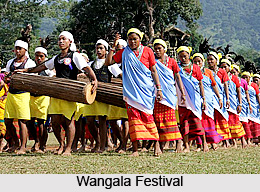 The villages of Tripura in northeast India are well known for celebrating various tribal festivals throughout the year. The festivals in Tripura are counted amongst the most colourful northeast Indian village festivals and they are celebrated in a unique style. Kharchi Puja is one of the major festivals celebrated in the villages of Tripura. People worship 14 Gods during this festival and it is held every year in the month of July. The Kharchi Puja attracts people from all over India. Another major northeast Indian village festival is the Ker Puja. This is celebrated 15 days after the Kharchi Puja and this unique festival is celebrated for the welfare of the people. Songs and dances are very much essential parts of all these northeast Indian village festivals. The festivals like Poush Sankranti, Ashokashtmi, Garia, Ker Ganga, Gajan, etc. are also considered the major festivals in the villages of Tripura.
The villages of Tripura in northeast India are well known for celebrating various tribal festivals throughout the year. The festivals in Tripura are counted amongst the most colourful northeast Indian village festivals and they are celebrated in a unique style. Kharchi Puja is one of the major festivals celebrated in the villages of Tripura. People worship 14 Gods during this festival and it is held every year in the month of July. The Kharchi Puja attracts people from all over India. Another major northeast Indian village festival is the Ker Puja. This is celebrated 15 days after the Kharchi Puja and this unique festival is celebrated for the welfare of the people. Songs and dances are very much essential parts of all these northeast Indian village festivals. The festivals like Poush Sankranti, Ashokashtmi, Garia, Ker Ganga, Gajan, etc. are also considered the major festivals in the villages of Tripura.
One of the major northeast Indian village festivals is the Yaoshang. This is the premier festival celebrated in the villages of Manipur and this five-day long festival starts from the full moon day in February-March. A particular type of Manipuri folk dance named Thabal Chongba is the special attraction of this festival. The Manipur New Year, Cheiraoba is also a major northeast Indian village festival. It is celebrated in the month of April and the villagers clean and decorate their houses and prepare special festive dishes on this occasion.
Wangala or the Hundred-drum Festival is the most important festival celebrated by the tribal community, Garos in the villages of Meghalaya. This festival is also counted amongst the most important northeast Indian village festivals.
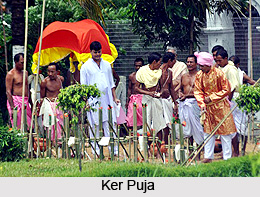 This harvest festival is celebrated in honour of Sun God and is held in the months of November and December. Another important northeast Indian village festival is Ka Pemblang Nongkrem Dance, popularly known as only Nongkrem Dance. This is held annually for five days by the Khasi tribes. Behdienkhlam is the premier dance festival celebrated by the Jaintia tribes in the villages of Meghalaya. This festival is celebrated once the sowing period is over.
This harvest festival is celebrated in honour of Sun God and is held in the months of November and December. Another important northeast Indian village festival is Ka Pemblang Nongkrem Dance, popularly known as only Nongkrem Dance. This is held annually for five days by the Khasi tribes. Behdienkhlam is the premier dance festival celebrated by the Jaintia tribes in the villages of Meghalaya. This festival is celebrated once the sowing period is over.
All the major festivals celebrated throughout India are celebrated in the villages of northeast India. The festivals like Durga Puja, Diwali, Holi, Dussehra, Eid-ul-Fitr, Eid-ul-Adha, Muharram, Christmas, Buddha Purnima, Mahavir Jayanti, Gurupurab, etc. are celebrated with much pomp and gaiety in the northeast Indian villages. The northeast Indian village festivals are full of entertainment colour, music and cheerfulness. Most of the festivals are related to agriculture or have mythological significance and the villagers enjoy them greatly.
South Indian Village Festivals
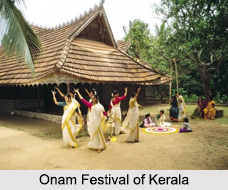 The villages of South India belong to the states of Kerala, Tamil Nadu, Karnataka and Andhra Pradesh. The South Indian culture mostly includes festivals that are related to their religion and water sports. Their common festivals are Onam, Pongal and numerous festivals on music and dance are quite popular in south Indian villages.
The villages of South India belong to the states of Kerala, Tamil Nadu, Karnataka and Andhra Pradesh. The South Indian culture mostly includes festivals that are related to their religion and water sports. Their common festivals are Onam, Pongal and numerous festivals on music and dance are quite popular in south Indian villages.
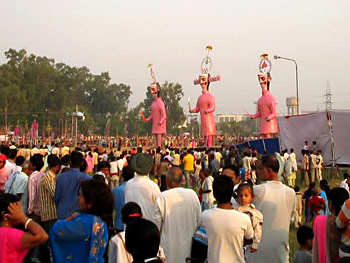 The South Indian villages are famous all over the country for their glittering festivals and their wonderful ways of celebrating these festivals. The south Indian village festivals are of different kinds like religious, or seasonal or related to harvesting. While some of the festivals are just agrarian and pastoral in nature, others are connected with mythology. There are also a few sports festivals celebrated in the villages of south India. The south Indian villages comprise the villages located in the states of Kerala, Karnataka, Tamil Nadu, Andhra Pradesh, etc.
The South Indian villages are famous all over the country for their glittering festivals and their wonderful ways of celebrating these festivals. The south Indian village festivals are of different kinds like religious, or seasonal or related to harvesting. While some of the festivals are just agrarian and pastoral in nature, others are connected with mythology. There are also a few sports festivals celebrated in the villages of south India. The south Indian villages comprise the villages located in the states of Kerala, Karnataka, Tamil Nadu, Andhra Pradesh, etc.
Dussehra is considered one of the major south Indian village festivals. This festival is celebrated in all the villages of south India with much pomp and liveliness. Karaga is a unique festival celebrated in the villages of Karnataka. It is celebrated on the full moon day of April, which is the first month of Kannada calendar. The New Year celebration in Karnataka is known as Yugadi. The villagers also celebrate the other major religious festivals like Makar Sankranti, Diwali, Holi, Eid-ul-Fitr, Eid-ul-Adha, etc. with great enthusiasm and cheerfulness. The birthday of Lord Ganesh, Vinayak Chaturthi is also celebrated in the villages of south India.
The villages of Kerala in south India are famous for backwaters and boat races, which are celebrated with great exuberance. Vishu is one of the most important south Indian village festivals and is the New Year of the Malayali people. Another notable south Indian village festival is Onam festival. This festival is celebrated in the honour of the King Mahabali, who once ruled Kerala.
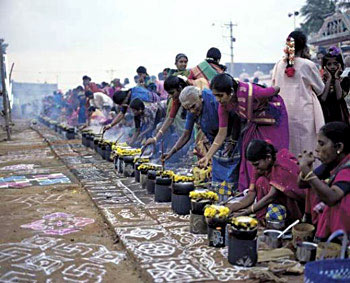 Pongal festival is counted amongst the most famous and popular south Indian village festivals. This harvest festival is mainly celebrated in the villages of Tamil Nadu and it has three days duration. The three days of the festival have different names like Bhogi (first day), Pongal (second day) and Mattu Pongal (third day). The villagers wear new clothes and decorate their houses with beautiful motifs using rice flower during the Pongal festival. Pongal is actually the name of the sweet made of the first rice. Float festival is also an important south Indian village festival. The villagers embellish the icons of goddess Meenakshi and after taking her consort in a colourful procession, they float the icons in the tank of a raft decked with flowers and lamps.
Pongal festival is counted amongst the most famous and popular south Indian village festivals. This harvest festival is mainly celebrated in the villages of Tamil Nadu and it has three days duration. The three days of the festival have different names like Bhogi (first day), Pongal (second day) and Mattu Pongal (third day). The villagers wear new clothes and decorate their houses with beautiful motifs using rice flower during the Pongal festival. Pongal is actually the name of the sweet made of the first rice. Float festival is also an important south Indian village festival. The villagers embellish the icons of goddess Meenakshi and after taking her consort in a colourful procession, they float the icons in the tank of a raft decked with flowers and lamps.
One of the notable south Indian village festivals is the Karthigai Deepam festival. The Masimagam festival is a major village festival celebrated in the villages of union territory, Puducherry. The Veerampattinam and the Villianur Car Festival are the two other major festivals celebrated in Puducherry. Apart from these, the other major south Indian village festivals include the Aranmula Boat Race, Natyanjali Dance Festival, Kavadi Festival, etc.
The south Indian village festivals are well known for their music, classical dance and theatrical performances. The village festivals have an ethnic taste and colour of their own. The villagers perform many interesting rituals, grand processions, decorations and fireworks during the festivals that attract several tourists from all over the country. The village festivals play a major role to promote tourism in the region.
Central Indian Village Festivals
The Central Indian villages belong to the states of Madhya Pradesh and Chhattisgarh. Arwa Teej, Kajri Navami, Bhojali and Chherta are the common festivals of the rural areas in central India. Splendour, traditional songs, dances and colourful dresses are indispensable from these Indian village festivals.
West Indian Village Festivals
The West Indian states of Maharashtra, Goa and Gujaratv have some of the most colourful and cultural villages, celebrating the traditional festivals. These festivities date back to the customs of the early raja and maharaja eras. Besides celebrating the popular Hindu festivals, Jain and Buddhist festivals are also integrated in the culture of these villages.
The West Indian villages are counted amongst the most colourful and exotic villages all over India. The villages in the states of Rajasthan, Gujarat, Goa, Maharashtra, etc. comprise the West Indian villages. Several fairs and festivals are celebrated in these villages round the year and the West Indian village festivals are best known for the active participation of people from all strata of society.
Ganesh Chaturthi is one of the most notable and widely celebrated West Indian village festivals. This festival is celebrated to worship the God of wisdom and good fortune, Ganesh and it is an eleven-day long festivity participated by all in the society. The villagers perform various cultural activities during this festival including music, dance, drama, theatre, orchestra, plays, skits, etc. The other major festivals celebrated all over India like Diwali, Holi, Dussehra, Eid-ul-Fitr, Eid-ul-Adha, Muharrum, Christmas, Buddha Purnima, etc. are also celebrated in the West Indian villages.
 Another major West Indian village festival is the Gangaur festival celebrated in the villages of Rajasthan. The women of the villages bring home the Gauri, wife of Shiva and worship her during this festival. The Mewar festival is another village festival that welcomes the spring and it is a great visual feast to the tourists, as they can enjoy the Rajasthani songs, dances, processions, devotional music and firework displays. Urs is another major festival of people from the Muslim community in the villages of west India. The tribal communities in West Indian villages celebrate the Baneshwar Fair in the month of February. The fair is dedicated to Lord Shiva and people bath the Shiva Lingam with milk and applied saffron. The main attraction of this festival is the Bhils, who sing traditional folk songs sitting around a bonfire every night. Teej is also a major village festival in West India and is celebrated in the month of August.
Another major West Indian village festival is the Gangaur festival celebrated in the villages of Rajasthan. The women of the villages bring home the Gauri, wife of Shiva and worship her during this festival. The Mewar festival is another village festival that welcomes the spring and it is a great visual feast to the tourists, as they can enjoy the Rajasthani songs, dances, processions, devotional music and firework displays. Urs is another major festival of people from the Muslim community in the villages of west India. The tribal communities in West Indian villages celebrate the Baneshwar Fair in the month of February. The fair is dedicated to Lord Shiva and people bath the Shiva Lingam with milk and applied saffron. The main attraction of this festival is the Bhils, who sing traditional folk songs sitting around a bonfire every night. Teej is also a major village festival in West India and is celebrated in the month of August.
The Dang Darbar festival that coincides with Holi is counted amongst the most popular and famous West Indian village festivals. This festival is mainly celebrated in the villages of Gujarat and is a unique celebration of Holi by the tribes. The auspicious occasion that commemorates the worship of Divine Mother Goddess, Navaratri is another major festival in the West Indian villages. This is a nine-day long festival celebrated by everyone in the villages of Gujarat. The Garba raas and Dandiya dance are the most attractive features of this festival. The Marathi New Year, Gudhi Padava is celebrated in the West Indian villages in April. The Marathi people place a long decorated stick in front of their houses (called Gudhi) to welcome the New Year and they also worship the Gudhi.
Dedicated to the Snake God, Nagpanchami is one of the major West Indian village festivals. This festival is celebrated in the month of August and the women worship the snake during Nagpanchami. The Parsi New Year of Pateti is also celebrated widely in the villages of West India. The other West Indian village festivals include the Nariyel Purnima (worshipping the Sea God), Pola (when the farmer decorates his cattle, worships it and feeds it with goodies), Vasco Saptah, etc.
People from all classes of the village society celebrate the West Indian village festivals with much pomp and gaiety. The festivals are of different types like religious, seasonal or related to harvesting. However, whatever be the type of festival is, the people celebrate it together and take it as a great platform for social communication.
India is a land of unique festivals, retaining its culture and historical significance; the Indian villages are no exception.
